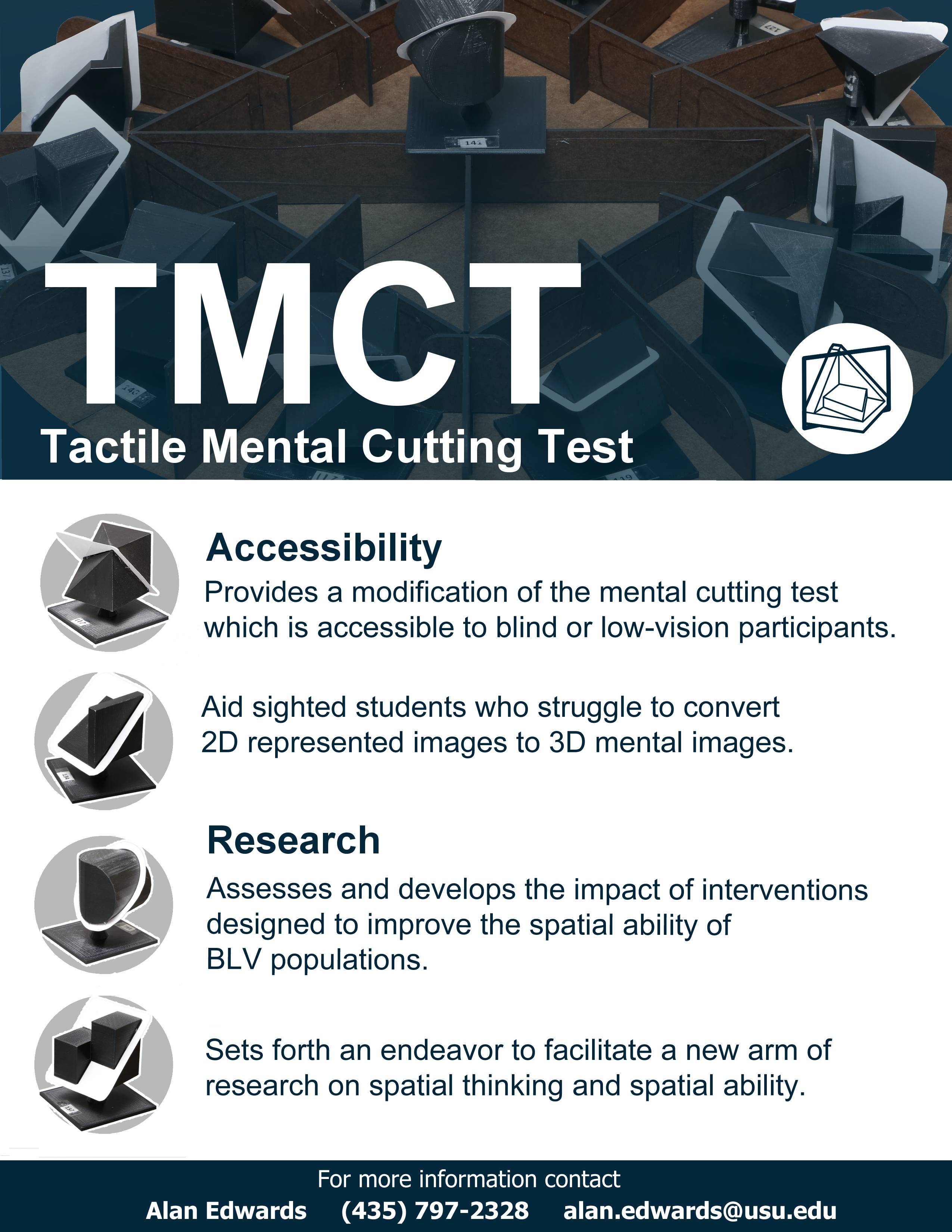Tactile Spatial Ability Test
This technology offers a 3-Dimensional counterpart to the traditional Mental Cutting Test used to evaluate spatial ability. This technology is intended to help blind and low vision students in STEM fields increase their spatial ability skills, while providing a measure of the impact of interventions meant to improve spatial ability. Further, this technology could be useful in helping sighted individuals increase their spatial ability.
Problem
Spatial ability is a good indicator of success in STEM fields. Blind and low vision individuals are underrepresented in STEM fields. Blind and low vision students can not easily participate in typical spatial ability assessment and improvement programs, so a method whereby they can learn these valuable skills is needed.
Solution
This technology creates a test which can be used by blind and low vision students to assess their spatial ability, while also helping to improve their spatial ability.
Benefits
This technology can be used to increase the inclusivity of STEM fields by removing barriers that prevent blind and low vision individuals from working in these fields.
Applications
Companies specializing in the development and/or administration of cognitive tests will find interest in this technology. As this technology is intended specifically for audiences in STEM, with an emphasis on blind and low vision individuals, the technology offers a strong specialization benefit.

Contact
Questions about this technology including licensing availability can be directed to:
Alan Edwards, MA, JD
Manager, Technology Transfer Services
(435) 797-2328 alan.edwards@usu.edu
USU ID CR18062
Inventor
Wade Goodridge, PhD., Engineering Education Department
Development Stage
TRL 6

